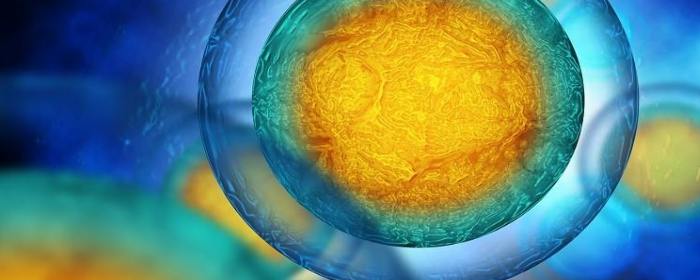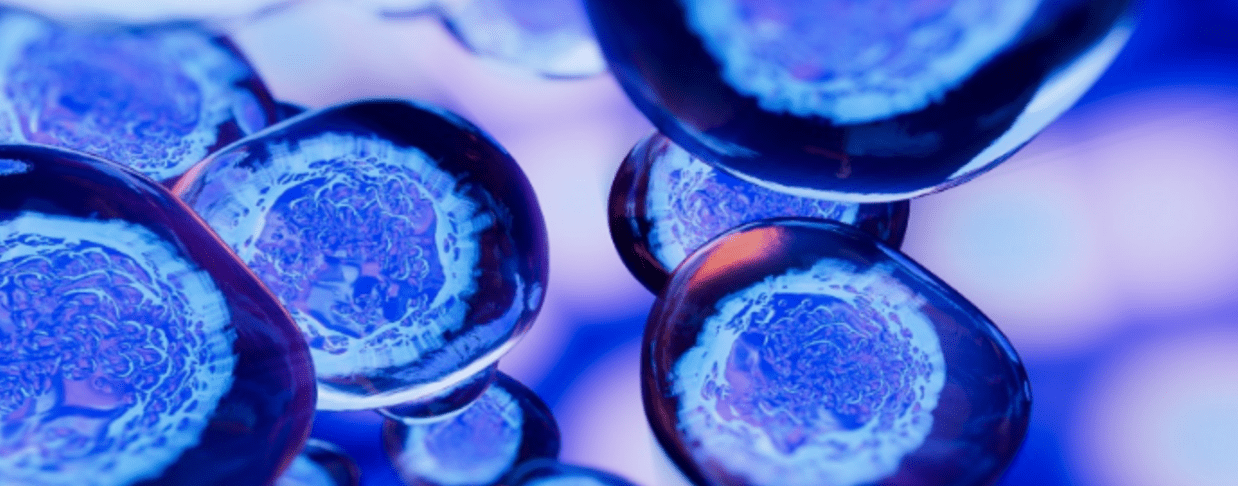
by admin | Sep 25, 2020 | Autoimmune, Stem Cell Therapy
Humans cannot practically live without an immune system. The immune system helps us prevent and fight off infections and detect and destroy cancer cells. For some, however, experience conditions that affect the immune system. Autoimmune diseases such as multiple sclerosis, polymyositis, atopic dermatitis, and rheumatoid arthritis can make day to day activities challenging.
Patients who do not find relief from current therapies such as immunosuppressants and biologic agents, or those who cannot tolerate the side effects, are limited to optimal options. And when the autoimmune disease is severe, the patient’s quality of life is extremely low.
Researchers recruited patients with various, difficult-to-treat autoimmune diseases to study stem cell treatment outcomes. These patients had tried many other autoimmune disease treatments, and all had failed. The stem cell treatment used in these cases was called “compassionate use” since the patients had exhausted other treatment options and their conditions were all progressed. This compassionate use indication allowed researchers to use large numbers of stem cells—higher than are normally used in stem cell therapy.
The scientists took small amounts of stem cells from adipose tissue, i.e. fat tissue. Under laboratory conditions, they “expanded” the purified stem cells. In other words, the researchers took a relatively small number of stem cells and caused them to multiply them into millions of cells. Millions of cells were needed so that the doctors could have substantial treatment doses for each patient. The patients with autoimmune diseases received multiple doses of adipose-derived mesenchymal stem cells intravenously. These patients were then followed clinically to observe any change in their disease.
The first thing that the researchers noted was that high doses of stem cells did show to be safe. Multiple infusions of up to 1 billion stem cells infused over less than a month did not result in adverse events.
Just as importantly, people who had failed all other autoimmune disease treatments saw benefit from mesenchymal stem cell therapy. Patients with rheumatoid arthritis or polymyositis who could not stand or walk before treatment were showing success in standing and walking post-treatment. Patients with severe atopic dermatitis had substantial improvements in symptoms. Even a person with progressive autoimmune hearing loss had their hearing restored in one ear (and partially improved in the other ear) after mesenchymal stem cell therapy.
The astonishing results will need to be corroborated in a larger number of patients, but this study did reveal that high dose stem cells were safe in people with various autoimmune diseases. Those who do suffer from debilitating autoimmune diseases and who have not found relief from other treatments may want to research and consider stem cell therapy for a possible alternative option to help manage symptoms.
Reference: Chan Ra, J., et al. (2011). Stem cell treatment for patients with autoimmune disease by systemic infusion of culture-expanded autologous adipose tissue-derived mesenchymal stem cells. J Transl Med. 2011; 9: 181.

by Stemedix | Sep 21, 2020 | Stem Cell Therapy, Cardiovascular Disease
Cardiovascular disease is the leading cause of death across the world. This umbrella term, also referred to as heart disease, collectively includes a broad range of cardiovascular conditions, including:
- Heart failure
- Coronary artery disease
- Cardiomyopathy
- Myocardial infarction (heart attack)
- Ischemic stroke
While these conditions have unique characteristics, they all affect the heart and blood vessels. For instance, in coronary artery disease, the most common cardiovascular disease, the buildup of plaque (known as atherosclerosis) narrows or blocks the arteries. The arteries harden, limiting the amount of oxygen-rich blood that makes its way to the heart. The heart can therefore not pump blood to the rest of the body as needed. In myocardial infarction, or heart attack, blood clots around the plaque. If the blood flow becomes completely restricted, the heart can no longer get necessary oxygen. In ischemic stroke, the clot prevents the blood flow to the brain.
There are several lifestyle treatments which may help to control cardiovascular disease, including:
- Smoking cessation
- Weight regulation
- Maintaining a healthy diet
- Routine exercise
- Controlling blood pressure and cholesterol
There are also medications and surgical interventions available for certain types of heart disease. With that being said, experts are also exploring stem cell therapy as an alternative or additional treatment.
Stem Cell Therapy for Cardiovascular Disease
Stem cell therapy is the use of the body’s natural, versatile cells to promote healing. Stem cells act as the foundation for other cells and have natural anti-inflammatory properties. As such, they can promote healing in damaged cells and tissues, as well as regeneration. When transplanted into patients with cardiovascular disease, it’s believed that the cells could release healing factors to reduce inflammation, promote new blood vessel development, minimize cell death, and regenerate new, healthy cells.
According to ClinicalTrials.gov, there are more than 1,500 studies that have been or are being conducted regarding the use of stem cells in patients with cardiovascular disease. Scientists have already made strides by discovering several key benefits across a number of cardiovascular conditions. For example, stem cells have been shown to:
- Improve left ventricular function, blood flow, and quality of life following a heart attack.
- Improve the heart’s functional capacity and ventricular remodeling, as well as quality of life, in heart failure.
- Enhance cardiac function in ischemic stroke.
- Improve limb function and decrease muscle atrophy, autoamputation, and connective tissue damage in peripheral artery disease (PAD).
In particular, human umbilical cord mesenchymal stem cells are showing remarkable promise for chronic conditions such as heart disease. They have a number of powerful properties, including:
- No exposure to environmental toxins or impact from the aging process
- High rate of regeneration
- High proliferation ability
- Abundant supply of cells compared to those extracted from adipose tissue or bone marrow
These cells are administered intravenously, and because they are not sourced from the patient themselves, minimize discomfort and recovery time. While stem cell therapy may not be for every patient with cardiovascular disease, the right candidates seeking a safe, non-surgical option may wish to explore the treatment. If you’re interested in exploring stem cell therapy, contact a Care Coordinator for a free assessment!

by admin | Sep 16, 2020 | Mesenchymal Stem Cells, Rheumatoid Arthritis, Stem Cell Therapy
Rheumatoid arthritis causes chronic inflammation of multiple joints throughout the body. This joint inflammation eventually causes the cartilage and bone to break down, and the tendons and ligaments surrounding the joints stretch and become deformed. Consequently, people with rheumatoid arthritis experience pain and loss of function in affected joints.
Unfortunately, rheumatoid arthritis is not just a disease of joints. Rheumatoid arthritis also causes systemic inflammation. People with rheumatoid arthritis commonly experienced fevers, weight loss, and chronic fatigue. Many patients report being achy or stiff apart from joints directly affected by arthritis. Rheumatoid arthritis can cause bone loss, muscle weakness, skin lesions, and kidney disease. Patients may also experience lung, heart, and vascular diseases.
The cause of rheumatoid arthritis is unknown; however, since it is an inflammatory disease, the main treatment for rheumatoid arthritis is an anti-inflammatory medication. Some lifestyle changes may help to ease some of the symptoms but most physicians initially recommend using a disease-modifying antirheumatic drug or DMARD soon after rheumatoid arthritis is diagnosed. DMARDs can modestly reduce symptoms of rheumatoid arthritis and help reduce the risk of patients developing debilitating joint abnormalities. DMARDs include drugs such as methotrexate or biologics such as infliximab or tofacitinib. Patients with rheumatoid arthritis usually also must take glucocorticoids, i.e. steroids to acutely control inflammation. Unfortunately, these agents have considerable side effects, especially when taken for long periods of time. Moreover, the treatments are not curative. As such, researchers are still looking for better treatments for rheumatoid arthritis.
Scientists recently conducted a prospective Phase 1/2 study of umbilical cord mesenchymal stem cells in patients with rheumatoid arthritis. They selected 64 patients with rheumatoid arthritis between the ages of 18 and 64. Volunteers received an intravenous infusion of mesenchymal stem cells and were followed for three years. At both the 1 and 3 years follow up appointments, the rheumatoid arthritis patients treated with mesenchymal stem cells had substantially lower levels of the blood markers that indicate rheumatoid arthritis (namely C-reactive protein, elevated erythrocyte sedimentation rate, rheumatoid factor, and anti-CCP antibody). The test of physical function also significantly improved at 1 and 3 years after stem cell treatment [Health Index (HAQ) and Joint Function Index (DAS28)]. The treatment was also safe, and no serious adverse effects were reported.
The results of this stem cell clinical trial are particularly remarkable because patients received only one intravenous treatment and enjoyed at least three years of improvement in their disease both in the blood markers but also in symptoms and physical functioning. Although not a cure, this study shows the apparent safety of mesenchymal stem cell treatment and the impressive benefits to allow patients to consider researching stem cell therapy as an alternative option for their rheumatoid arthritis symptom management. Indeed, if additional larger studies confirm these impressive results, umbilical cord mesenchymal stem cell treatment may become a possible standard of care in the treatment of rheumatoid arthritis in the future.
Reference: Wang L, Huang S, Li S, et al. Efficacy and Safety of Umbilical Cord Mesenchymal Stem Cell Therapy for Rheumatoid Arthritis Patients: A Prospective Phase I/II Study. Drug Des Devel Ther. 2019;13:4331-4340. Published 2019 Dec 19. doi:10.2147/DDDT.S225613

by admin | Sep 4, 2020 | CIDP, Stem Cell Therapy
Chronic inflammatory demyelinating polyneuropathy or CIDP is a neurologic condition in which the immune system interferes with the function of the nerves. Specifically, CIDP affects the peripheral (not central) nerves and nerve roots. Consequently, patients with CIDP have chronic weakness in their muscles. Muscle weakness usually occurs symmetrically (at the same time and degree on both the right and left sides of the body). Patients usually notice gradual problems emerging, like difficulty climbing stairs, standing up from a seated position, or walking.
Treatment for CIDP includes intravenous immune globulin (IVIG), steroids, or plasma exchange. Fortunately, about 9 out of 10 people with CIDP will respond to one or more of these treatments. However, about 10 to 15% of patients do not respond to any of the typical treatments. These patients either have partial or no recovery. Partial recovery means patients can walk but have substantially reduced strength. No recovery means that patients have severe, long-term disability.
From past work, scientists have shown that stem cell treatment is potentially helpful in treating immune-related disease. Thus, researchers are attempting to use stem cells to treat patients with severe CIDP that do not respond to standard treatments. Drs. Qin and colleagues recently reviewed the progress in the field of hematopoietic stem cell transplantation for CIDP.
The authors report several small clinical studies using stem cells to treat CIDP. Remenyi et al. showed that stem cells combined with other CIDP treatments helped a 26-year-old patient regain sensation and muscle strength, and symptoms of CIDP did not return. Mahdi-Rogers et al. demonstrated some success with stem cells in three patients with CIDP. One had complete remission and all three had at least temporary improvement in muscle function. Axelson et al. showed a bedridden person with CIDP could achieve disease remission with stem cell transplantation and another CIDP treatment. Similarly, Scheibe et al. and Barreira et al. independently reported that two patients who were paralyzed in all four limbs because of CIDP had complete relief of symptoms after stem cell treatment plus cyclophosphamide.
Of course, these extraordinary results must be considered preliminary. The review article mentions fewer than 50 CIDP patients treated with stem cells. Nonetheless, the favorable safety profile and early indications of success with stem cells are highly encouraging, especially for people with CIDP who have failed to improve after standard CIDP treatments.
Reference: Zhen Q., et al. (2020). Progress in Hematopoietic Stem Cell Transplantation for CIDP. Int J Med Sci. 2020; 17(2): 234-241.

by Stemedix | Aug 17, 2020 | Autoimmune, Stem Cell Therapy
Autoimmune diseases encompass more than 80 chronic conditions, many of which are debilitating with symptoms that can affect all body organs. In these conditions, the body’s own immune system mistakenly attacks healthy tissue. An estimated 50 million people in the U.S. have some form of autoimmune disease, making it an extremely prevalent healthcare concern. While the traditional treatment for these conditions often includes the suppression of the immune system, stem cell therapy has led to much research for an alternative option for patients.
Stem cells can be retrieved from a patient’s own adipose (fat) tissue or donated from healthy screened umbilical cord-derived tissue and have strong anti-inflammatory properties. When strategically redistributed to the patient, they can help control the inflammatory response seen in autoimmune disorders.
Which Autoimmune Diseases Can Be Treated with Stem Cells?
While the possibilities for treating autoimmune conditions with stem cell therapy span far and wide, these are just a few of the conditions that have already benefitted from the treatment:
- Rheumatoid arthritis
- Lupus
- RSD-CRPS
- Crohn’s disease
- Multiple Sclerosis
What Are the Benefits of Stem Cell Therapy for Autoimmune Diseases?
Although conventional treatment for autoimmune conditions has improved significantly, it still often can be a challenge to help the full scope of symptoms patients face. Moreover, long-term use of certain medications can have serious side effects, including increased risk of infection and cancer risk.
Stem cells regulate the overactive parts of the immune system without compromising its ability to protect against disease. In addition to regulating the immune response, they can also promote widespread healing, making them an especially worthwhile treatment option to consider for people with autoimmune diseases. Moreover, stem cells are well-tolerated with low risk and require little to no downtime or recovery.
What Does the Stem Cell Therapy Process Entail?
The exact process by which stem cells are deployed can vary from one patient to the next. Most individuals with autoimmune diseases will receive stem cells intravenously. In certain cases, patients may also benefit from having stem cells administered at specific points in the body. For instance, people with rheumatoid arthritis may receive joint injections.
Looking Ahead
While the results of stem cell therapy for autoimmune disease will vary by each individual and condition, the stem cells offer an alternative option allowing the ability to modulate the immune system. As research evolves, experts will have an even better understanding of the precise modalities needed to promote the best possible treatment outcomes. Contact a Care Coordinator today for a free assessment!

by Stemedix | Aug 10, 2020 | Stem Cell Therapy, Chronic Pain
Oftentimes, chronic pain sufferers are led to believe their discomfort is simply something they’ll have to endure. While home remedies such as heat and cold therapy and over-the-counter pain medications may provide some relief, it’s typically inadequate. This is despite the fact that an estimated 20% of the U.S. adult population experiences chronic pain.
Whether it’s due to a previous injury, arthritis, or another culprit, chronic pain calls for a more effective approach. For this reason, experts have been studying the use of regenerative medicine to treat it. One therapy in particular which shows promise is stem cell therapy for chronic pain.
Stem Cell Treatment for Chronic Pain
Stem cells are the body’s cellular building blocks from which all differentiated cell types are derived. Not only can they transform into virtually any cell type, but they also have restorative qualities to help repair damaged tissue in the joints, cartilage, and tendons, among other areas. Plus, they can reduce inflammation for further healing benefits.
Many people with chronic pain are ideal candidates for this treatment. People with degenerative diseases, including rheumatoid arthritis and osteoarthritis, are among the prime populations who can benefit. In addition, performance athletes may receive stem cell therapy to repair joints and muscles which have been damaged by trauma. People whose pain doesn’t respond well to analgesic medications, including those with type 2 diabetes or anyone who has had amputation surgery can also benefit from stem cells. Research shows the cells can curb neuropathic pain, unlike many other treatments.
For the more than 54 million people in the U.S. suffering from arthritis, stem cells can provide an alternative option to explore. Since the prevalence of arthritis is only predicted to increase over the next decade, finding a viable option to combat the pain is critical. Stem cell therapy has been studied to show promising outcomes as a non-surgical means to manage the common symptoms of arthritis, including the hips, shoulders, knees, and spine. Patients experience benefits such as improved mobility and flexibility, reduced pain and stiffness, and increased energy.
In addition to these results, patients also experience benefits such as:
- Reduced downtime before returning to normal activities
- Fast results
- Reduced inflammation
While stem cells may not be a cure-all for chronic pain, they are certainly an avenue worth exploring for anyone whose discomfort has persisted after using traditional approaches. Contact a Care Coordinator today for a free assessment!







 St. Petersburg, Florida
St. Petersburg, Florida
